Imagine what it’s like to live and work in a mixed world composed of real and virtual environments. With technology advancing every hour, I would not be surprised if we already started living in 2050. The world is changing, and so are we, so how about introducing you to a brand new concept, Extended Reality (XR), that brings you business opportunities beyond your imagination.
Why am I imposing this concept on Businesses?
Especially in a business landscape, over 72% of the companies have transferred their operations to a digital platform. Now when it comes to connecting with your customers, there is nothing better than Extended Reality (XR) to bring engagement.
According to the Statista Survey conducted in March 2021, the Extended Reality (XR) industry capital is expected to reach 300 billion U.S. dollars by the year 2024.
Do you think a concept that huge won’t surge the increasing demand in every sector that uses technology?
So yes! This is why our emphasis is on online businesses when introducing XR to you. Only by opting for Extended Reality, your business can reduce cost, increase efficiency and drive more revenue.
And not to forget the remarkable customer experience you will provide to your users, all thanks to XR.
Sounds Interesting, right? Here is a roadmap for the content lying ahead.
- What exactly is an Extended Reality (XR)?
- How did the concept of Extended Reality become huge?
- Extended Reality business Implications and Applications.
- Industries/Sectors Transformed By Extended Reality.
- Where do you begin with Extended Reality?
- Expert XR Tips for businesses.
- FAQs on Extended Reality.
What exactly is the Extended Reality (XR) Concept?
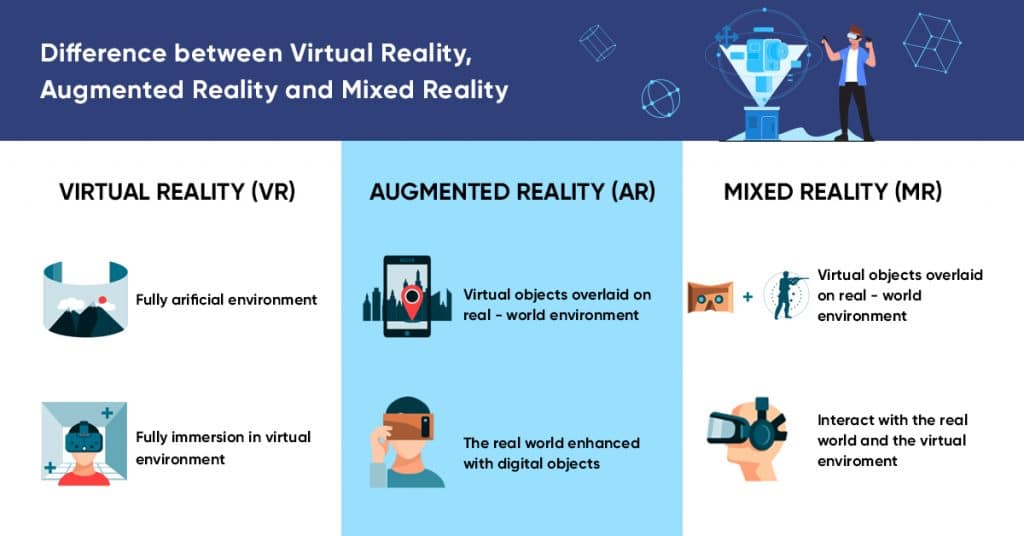
Extended Reality is basically an umbrella term for three of the extraordinary concepts- Augmented Reality (AR), Virtual Reality (VR), and Mixed Reality (MR). These immersive technologies extend the Reality we experience by either blending the real-virtual environment or creating an exclusive world. To get a better picture, let’s briefly understand the three concepts.
Augmented Reality (AR) :

In AR, you can connect the physical environment with the constructed virtual environment through devices like smartphones, smart lenses, AR glasses, tablets, etc. This way, your real-world gets the digital details via text, images, and animations.
Remember the game Pokemon Go? That’s the perfect real-time example of AR technology. The game overlays certain digital creators in the real world, and voila! You have a hit match.
Virtual Reality (VR) :
This technology constructs a brand new digital world where you can experience any sensations (touch, vibrations). How is this different with AR, you ask?
In contrast to AR, users are fully immersed in the simulated virtual environment. You can use a head-mounted display (HMD) or a VR headset to get a 360° view of the artificial world. Remember how you visit a museum or a gallery where you are given headsets, and you feel like you are under the ocean, walking on the moon, or doing whatever the VR has created for you.
The entertainment and the gaming industries were the primary sectors to adopt VR; however, now, every existing sector finds VR useful.
Mixed Reality (MR) :
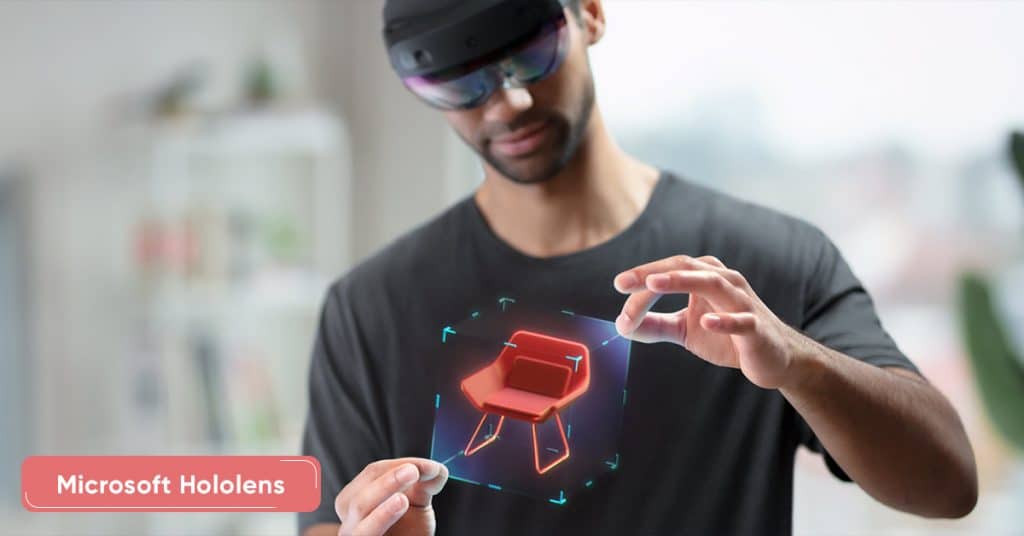
Your virtual and real-world objects co-exist in Mixed Reality (MR) technology. This is one of the recent concepts also known as “the hybrid technology.” MR also allows users to interact with and manipulate both environments using MR devices.
An ideal example for this would be Microsoft Hololens. Here, you can place particular digital objects in the room you are standing in and interact or spin or change the object in a desirable way from anywhere.
Microsoft recently introduced Hololens 2 that offers the most comfortable Mixed Reality experience available. Watch how it gives you reliability, scalability, and other top-notch experiences.
Today, companies are exploring various approaches to use MR for supporting initiatives and enhancing businesses.
How did the Concept of Extended Reality (XR) become huge?
We know that AR and VR have coexisted in every form for decades. However, since the exposure of Mixed Reality, the tech experts have started re-thinking how we interact with digital systems and content. Now, I will skip the 2000s since it was a quiet time for Extended Reality. The moments began in 2010 when online businesses started gaining momentum. Here are a few of the highlights:
- In 2010, an 18-year-old Palmer Luckey built a prototype for an Oculus Rift VR headset. With the given computer processing power and 90° field vision. This prototype reignited tech interests in VR and MR. Later in 2014, the Oculus VR was acquired by Facebook for around $2 billion.
- 2014 was also a busy year for XR. Sony and Samsung officially announced that they were creating their own VR sets. In the meantime, Google released its first Cardboard device, Google AR glasses, and low-cost cardboard VR viewer for smartphones.
- Further, in 2016, Microsoft released its Hololens headset that took the idea of AR to a brand new level. By the end of 2015, thousands of mobile app development companies started creating AR and VR devices.
- By 2020, Extended Reality (AR, VR, and MR) made it to its full blow. Today, I see the adoption of XR technology across diverse sectors such as construction, education, healthcare, and even law enforcement.
Extended Reality Business Implications and Applications:
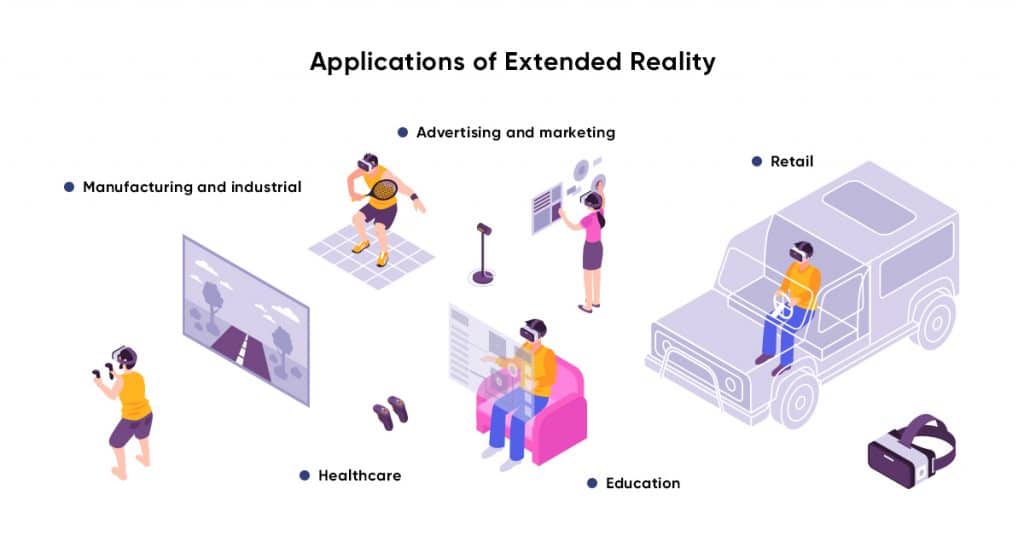
If you ask me what could be the implications of Extended Reality in your business, I will refer you to some examples.
- If your business has an operations role, by using XR, you can experience your customers as if you are standing with them in the same room.
- Even your production-operations team can have a personal hands-on experience with the implemented process.
- Rather than sending your employees to the warehouse to get your parts, you can simply bring them to the manufacturing line to see how it is being made.
In general domains, there are thousands of practical XR applications:
Retail-
XR gives users the ability to try before actually buying it. For e.g., Watch manufacturer “Rolex” has an AR application that allows you to try the selected watches on your wrist.
The furniture company “IKEA” also allows you to place furniture items into your home via smartphone.
Remote Work–
Workers or employees can easily connect remotely with the clients using XR, making them feel as if they are in the same room.
Real Estate-
Finding tenants and buyers can probably become more accessible with XR if interested people can “walk through” spaces and decide whether they can see themselves living in the given accommodation or not.
Marketing-
The possibility to engage with your potential customers using XR is one of the most significant benefits for the company. XR has been proven to attract engagement and convenience to businesses.
Training-
XR has immense advantages in the training field. Especially in life-death circumstances, XR can help provide training tools and hyper-realistic situations where the professionals can find required solutions. This is applicable to any sector such as healthcare, chemist, soldiers, etc., where they can learn to respond to several situations without actually putting lives at risk.
Entertainment/ Gaming–
As mentioned above, the gaming and entertainment industry were the early adopters of XR that are still evolving with new experiences every day.
Industries/Sectors transformed by Extended Reality (November 2021 Updates)
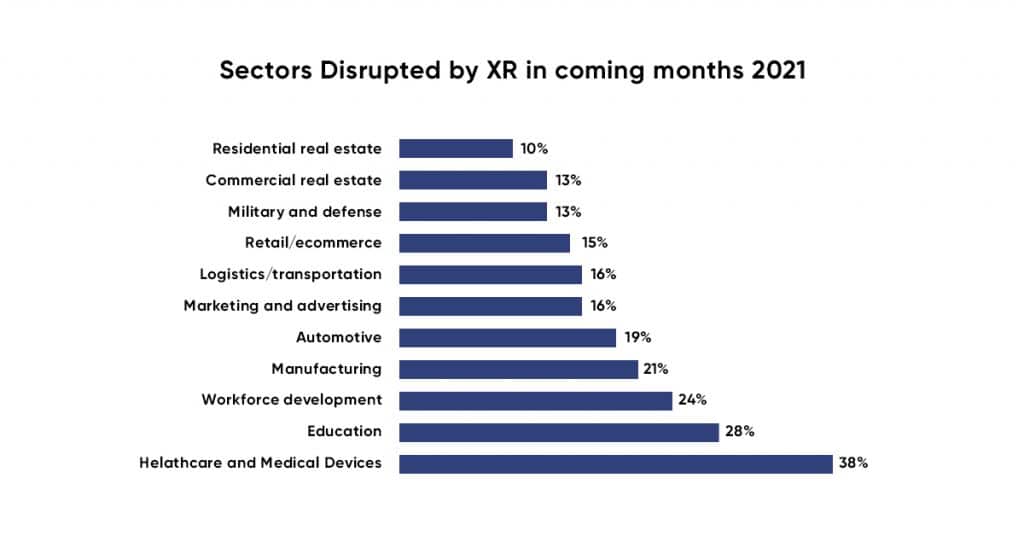
The above image depicts how Extended Reality has affected every sector and domain through its applications.
Here are some of the industries that went through a drastic change in recent years due to Extended Reality.
Manufacturing and Industrial :
- XR is used to analyze real-time issues in factories and devise suitable solutions.
- To develop purposeful training using a customized approach.
- To improve safety protocols and standards without impacting lives and machinery.
Healthcare :
- To impart quality surgical training.
- To timely analyze and assist in all kinds of required treatments.
- To use Extended Reality in healthcare means to give the best prompt service delivery.
Here is a video of Dr. George from Medtronic Canada explaining how XR is revolutionizing healthcare.
Retail :
- To experience smooth navigation and examination of the product.
- To avail personalized information and benefits.
- It’s important to examine everything and anything before purchasing, whether it’s apparel, furniture, accessories, or even real estate.
Advertising and Marketing :
- To create the best ever personalized content for attracting and retaining customers.
- To analyze real-time consumer data to engage and ignite and create similar patterns for users.
Education :
- To make learning interesting and flexible.
- To ensure self-doubts.
- To provide a visual representation of every information that is being taught.
Where do you begin with Extended Reality?
For businesses ready to adapt, I would give you a heads up with the very first step where extended Reality may seem prohibitive to you. Resources for business are available everywhere, but they may be too generalized or not applicable to your domain.
Another problem might be the skill to work with the content that XR generates. Particularly, If you are unsure of what your business needs, you may require substantial technical assistance.
To begin with, make a descriptive list of every resource you need. Please make note that Extended Reality is not suitable for every product; however, it may give an innovative edge to your product. Try experimenting with design, development, and general business production processes.
Watch a video of Accenture Technology Vision where the company showcases how it utilizes XR to connect with people worldwide.
Expert XR Tips for Businesses:
For many business ideas, Extended Reality is going to complement business activities. If you are new to the concept of XR, here are a few tips that go a long way:
- Critically evaluate if your product is suitable for XR-
Currently, not every product is ideal with XR. If your product is difficult to produce in a real-time environment, it will suit the needs of XR.
- Research existing use of XR in your business sector-
Understanding what already exists will help you provide context for what is feasible in both your business’s long-term and short-term. Moreover, research over software and hardware resources is required, along with the budget to install XR in your product.
- Analyze your existing customers and understand if it is the right investment-
XR technologies ask for both time and investment in planning and execution. To make it easier, understand if your customers actually ask for the need of XR in your product. Then make the right decision.
- Clear plan for implementation-
Avoid being overwhelmed and examine the outputs that are likely to be for commercial purposes. You can hire a skilled and reliable web app development company to test if your XR is worth it for your product multiple times.
- Speak to professionals/ Experts –
Although XR is still in the early stage of adoption, there are experienced professionals who could help with technical guidance. Do not hesitate to reach out to the experts who can assist you with every minute detail.
Frequently Asked Questions on Extended Reality
What are some of the biggest business benefits of Extended Reality?
Here are some of the proven advantages of implementing Extended Reality into business:
- Extended Reality cultivates brand awareness.
- XR has constantly been successful in increasing engagement.
- XR brings you convenience.
- XR technology delivers a groundbreaking simulation.
- XR technology also creates positive associations.
What possible challenges does XR bring to the business?
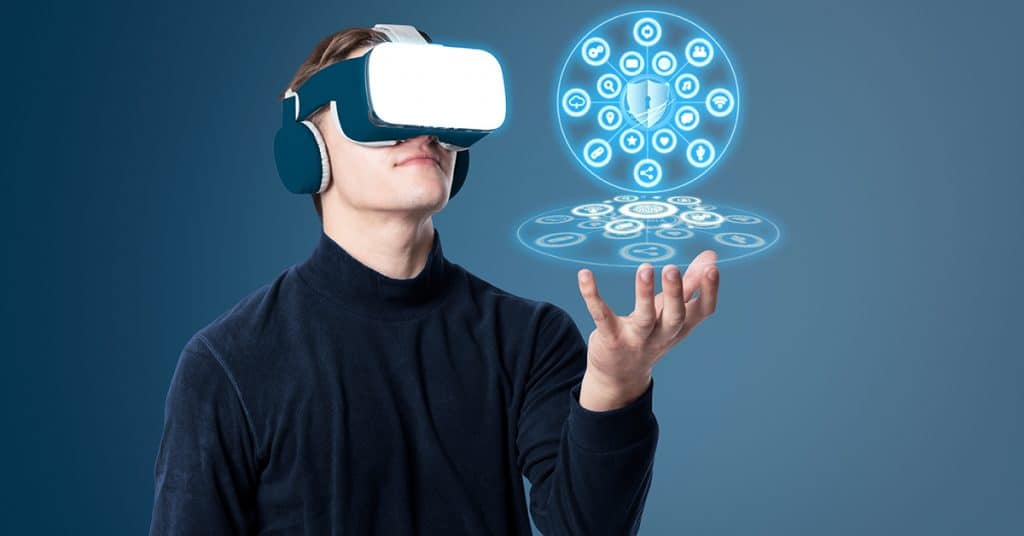
Extended Reality is in the battle for mainstream adoption. Firstly, XR requires a vast amount of detailed and personal data about what you need, what you make, and how you make it. This data is super essential for you and has to be protected at any cost.
In addition, the cost to implement XR needs to be managed; else, startups and mid-scale companies might find it challenging to invest in it.
There are major hardware issues included that are not just limited to technical services.
However, the good news is that as each day passes, we become a step closer to resolving XR issues.
Where can I find professional assistance for Extended Reality?
You can always seek services from dedicated professionals or a trusted mobile applications development company to get all your answers. You can also understand the technology the right way and develop the best tools to move your business forward.
I hope I was able to cover everything you need to know about Extended Reality. Let me know if you decide to implement XR in your project.


